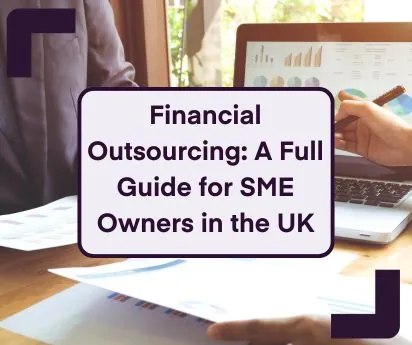
A guide to HMRC Simple Assessment and paying your tax bill
14 Nov 2020For anyone who regularly completes an annual tax return, HMRC’s introduction of ‘Simple Assessment’ will be welcome news. Unfortunately, it doesn’t yet apply to the majority of the 11 million people who file a return, but the process has begun and is set to grow more inclusive as part of HMRC’s long-term ‘Make Tax Digital’ initiative.
Initially, Simple Assessment was made available to two groups from September 2017:
-
New state pensioners with a pension income greater than their personal allowance in the 2016/17 tax year. Simple Assessment applies if the excess amount cannot be collected through PAYE.
-
Employees on PAYE who have underpaid tax. Simple Assessment applies if the underpaid amount cannot be collected through their tax code.
The wider rollout has been delayed because of the changes affecting HMRC following Brexit and the various tax-related issues caused by the pandemic during 2020 and 2021.
However, the initiative is set to continue, so in this guide we will explain how Simple Assessment works and your personal responsibilities for dealing with it and paying the correct amount of tax at the right time.
The basics of Simple Assessment
As the name suggests, HMRC aims to make life simpler by completing most of the information for you. They can do that by using real time information provided by employers, the Department for Work and Pensions (DWP), other government departments, private pension providers, banks and building societies.
That means you are no longer responsible for providing information on salary and employment benefits, state pensions, state benefits, private pensions and interest on savings.
Instead of completing an annual tax return, you will receive a tax calculation from HMRC in the form of a Simple Assessment letter or a P800 Tax Calculation letter – the letter that tells you how much tax you have underpaid or overpaid.
The Simple Assessment letter includes the following information held by HMRC:
-
Income from employment
-
Employee benefits
-
State pension
-
Private pension
-
State benefits
-
Savings interest
Based on that information and your personal allowance for the tax year, HMRC provides their calculation of the tax due.
Once you have received a Simple Assessment letter, you are removed from the Self-Assessment system and no longer have to complete a tax return.
Your responsibility for checking Simple Assessment
Although you don’t have to provide information to HMRC, it is your responsibility to check that the information HMRC uses is accurate.
If there are errors, you must report them to HMRC within 60 days of the date of the Calculation. If you don’t and you underpay tax because of HMRC’s error, you could be liable to a penalty charge.
You can check the information by comparing the figures on documents that pension providers, banks, building societies and government departments such as DWP send you.
If HMRC rejects your claim that their information is incorrect, you can appeal, but you must file your appeal within 30 days of HMRC’s notification.
When you are checking the figures, you may find it difficult to calculate the exact amounts you received within the periods covered by the tax year for items such as state benefits or savings interest. A phone call to the provider may be more informative than a standard letter or bank statement covering a different period.
Paying your tax bill
If you agree with the assessment, you must pay the due amount by the date given in the letter, either online or by cheque payable to HMRC.
The due date for payment is likely to be either 31st January following the end of the tax year or three months after the date of the Self Assessment letter if it is later than 31st January.
You must pay by the correct date or HMRC may charge interest and penalties on any overdue amount.
If you are unable to pay by the due date, you must contact HMRC and explain your circumstances. You may be able to arrange a ‘Time to Pay’ agreement, although it is not clear if this facility is available for Simple Assessment taxpayers.
Scope of Simple Assessment
HMRC have begun the rollout by focusing on the simplest cases – the two groups listed in the introduction: new state pensioners with no other source of income and PAYE employees with underpaid tax.
Any taxpayer with other sources of income or qualifying expenses will continue to file a Self-Assessment return and pay taxes by the existing dues dates.
Expanding Simple Assessment
HMRC plans to expand the scope of Simple Assessment to other taxpayers under the ‘Make Tax Digital’ strategy.
They would simplify online Self-Assessment filing initially by entering any data that they hold, reducing the amount of work for the taxpayer. Each individual would only have to enter data that HMRC does not hold.
In the longer-term, HMRC’s aim is to capture more of the non-standard data through regular digital submissions and updates by taxpayers.
Maintaining records for Simple Assessment
Although you are not required to keep specific records if you are moved into Simple Assessment, it is good practice to maintain records and receipts for any relevant income or expenditure.
The records could prove useful if you find errors in HMRC’s calculations or if you require evidence in the event of an HMRC investigation into your tax affairs.
Under traditional tax return rules, you must keep your records for at least 5 years after the 31st January submission deadline of the relevant tax year. For example, if you submitted your 2019 to 2020 tax return online by 31st January 2021, you must keep your records until at least the end of January 2026.
Support from Accounts and Legal
This is a brief outline of HMRC’s Simple Assessment process. Although the initiative’s aim is to make tax simpler, we recognise that some taxpayers may find problems in reviewing HMRC’s calculations or appealing their decision.
If you would like professional advice on any aspect of Simple Assessment or would like confirmation that you are paying the correct amount of income tax, our team of experienced tax accountants will be glad to help.
To find out more, please contact us on 0207 043 4000 or info@accountsandlegal.co.uk.





















